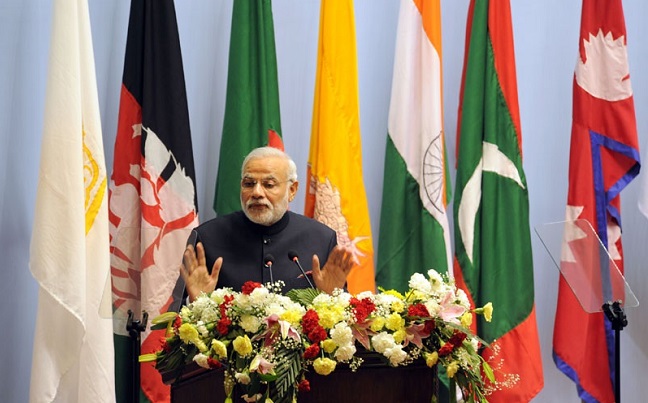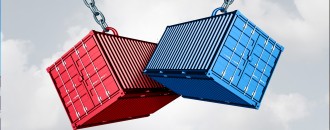
India’s trade surplus within SAARC is unsustainable
The Dollar Business Bureau | @TheDollarBiz
 "Let us work to change cynicism into optimism," said PM Modi at the 18th SAARC Summit (Pic. source - Government of India)
"Let us work to change cynicism into optimism," said PM Modi at the 18th SAARC Summit (Pic. source - Government of India)Indian Prime Minister Narendra Modi is on his way back after a vegetarian meal and a photo shoot during the Retreat at Dhulikhel after the 18th SAARC summit concluded today. It is reported that he shook hands with his Pakistani counterpart Nawaz Sharif. While many are left wondering about the outcome of this SAARC summit, there is perhaps more than what meets the eye. There are several takeaways for India, and not allowing the Chinese to take centre stage at the event is one of those. The other one could be a significant progress in Trade Facilitation with other countries and the isolation of Pakistan which finds SAARC a failed platform and wanted China to become a full-fledged member a few days ago. PM Modi was right when he said that much of talks about SAARC is clouded in cynicism and scepticism. However, India’s size is often wrongly blamed for this. India shares borders with almost all SAARC members, but this has become a problem for India too. India has border problems with Bangladesh, Sri Lanka and Pakistan, and it is a major bottleneck for any bilateral breakthrough between India and Pakistan. Because Pakistan wants to internationalise the border problem with India, it cannot allow progress on any other front, and trade is the least likely one to move forward. However, PM Modi’s hints were strong that Pakistan risks getting isolated and urged other members to move on. PM Modi said, “The bonds will grow. Through SAARC or outside it. Among us all or some of us.” He had bilateral meetings with almost all the other six SAARC leaders and assured that India will level the playing field to reduce the huge trade surplus (of around $15 billion) India has with other SAARC countries. India’s export-to-import ratio stands at around 2.3 for Afghanistan, 12.7 for Bangladesh, 2.3 for Bhutan, 6.8 for Nepal, 6.8 for Sri Lanka, 5.3 for Pakistan, and 26.7 for Maldives. PM Modi said this lop-sidedness is neither right nor sustainable. “We will address your concerns and give you a level playing field in India. But, I encourage you to attract Indian investments to produce for the Indian market and create jobs for your youth.” He also said that electricity be traded like a commodity and urged countries to adopt trade facilitation. “We have given five South Asian partners duty free access to 99.7% of their goods and prepared to do more with others,” Modi said. Pakistan is one of the nations that has refused to grant India the Most Favoured Nation (MFN) status under WTO obligations, and has urged India to reduce import duty on Pakistani agri and textile goods. Despite significant growth in exports by South Asian countries, intra-regional trade in SAARC has remained at around 4.3% of global trade of the region, and less than 10% of the region’s internal trade takes place under SAARC Free Trade Area. But the potential to grow trade within SAARC is high. India’s exports to other SAARC countries have grown by almost 34% y/y in 2013, compared to a slowdown in exports to EU. An Exim Bank study says that while the South Asian countries have made significant progress in integrating with the global economy, it was limited by low level of intra-regional trade. The study noted that addressing challenges in infrastructure, logistics, power trade, and connectivity could boost intra-regional trade in SAARC significantly.
This article was published on November 27, 2014.






 to success.
to success.